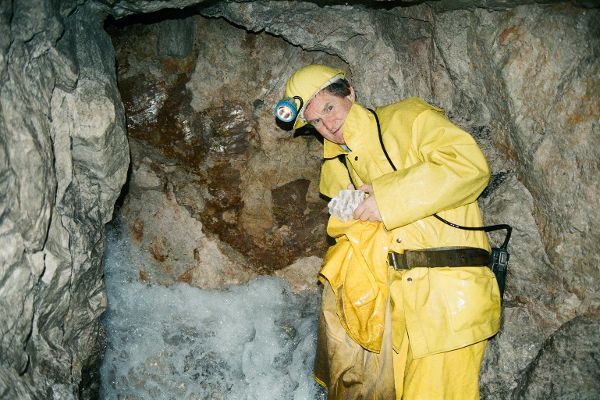Groundwater, pore, karstic and crevice groundwater aquifers

What do we mean by groundwater, groundwater aquifer, and types of groundwater aquifers?
The assignment to types of groundwater aquifers constitutes an important basis for the location and delimitation of bodies of groundwater in Austria. Every body of groundwater is assigned to one of the three types.
If a combination occurs there is an assignment to the hydrologically dominant type. In addition to that the other types are also included in the description in order to ensure that there is no loss of information.
For the purposes of the Water Framework Directive No 2000/50 EC the following definitions apply to the concepts of groundwater and/or groundwater aquifers.
Groundwater
Groundwater means all subterranean water in the saturation zone which is in direct contact with the ground or subsoil.
The area between the earth’s surface and the groundwater surface, which is not completely filled with water is, however, called “unsaturated zone”.
Groundwater aquifers
By groundwater aquifers we mean a subterranean layer or layers of rocks (stones) or other geological formations with sufficient porosity or permeability, so that either a significant groundwater flow or the extraction of considerable amounts of groundwater is possible.
3 Hydro-geological types of groundwater aquifers
Pore groundwater
The term “pore groundwater” refers to groundwater in unconsolidated rock and bedrock (e.g. gravel, conglomerates), whose voids (effective porosity) are predominantly formed by pores. It is first and foremost generated from wells. Typical pore groundwater aquifers in Austria are in particular located in big valley and basin landscapes, such as the Rhine valley, the Inn valley, Jaunted, Leibnitz Feld, Eferdinger basin, southern Vienna basin or Seewinkel. These groundwater reserves can be found on the one hand in the multi-layered debris deposits (gravel, pebble, and sands) of the Alps and, on the other hand, also in the former marine sediment deposits. In this context depth of rock formations of up to several hundred meters are not uncommon. The age of the groundwater can range between a few years and several thousand years.
Crevice groundwater
The term “crevice groundwater” refers to groundwater in crevices and non-karstic rock, the extraction takes place from springs or wells. Typical crevice groundwater aquifers in Austria are e.g. the crystalline rocks of the Central Alps of Vorarlberg up to the Burgenland, as well as of the Bohemian Mass with the different slate and granite rocks with very resistant silicate minerals. However, the bedrock, which was very much under pressure during the processes of mountain range formation, can partly be so rugged that this results at least in sufficient space for the seepage of precipitation water and water storage for utilizable springs for water supply. However, as opposed to the water reserves in pore and karstic groundwater, these water reserves are considerably less abundant.
Karstic groundwater
The term “karstic groundwater” refers to groundwater karstic rock; the extraction takes place from springs. Typical karstic groundwater aquifers in Austria are the extensive Northern and Southern Limestone Alps with limestone and dolomite rocks (carbonate rocks). This type of rock is, compared to the not so easily weatherable and harder silicate rock of the crevice groundwater aquifers much more vulnerable to weathering as it is basically made of the former lime shells of marine animals (reefs). However, in the course of thousands of years cavities can be formed as ideal water reservoirs. The Limestone Alps constitute therefore one of the major water reservoirs with the largest existing and also future water resources. As an example the city of Vienna is to be mentioned which is able to supply with the 1st and 2nd Vienna Aqueducts from the Hochschwab and Rax areas the total population (1.8 million inhabitants) with high quality drinking water.